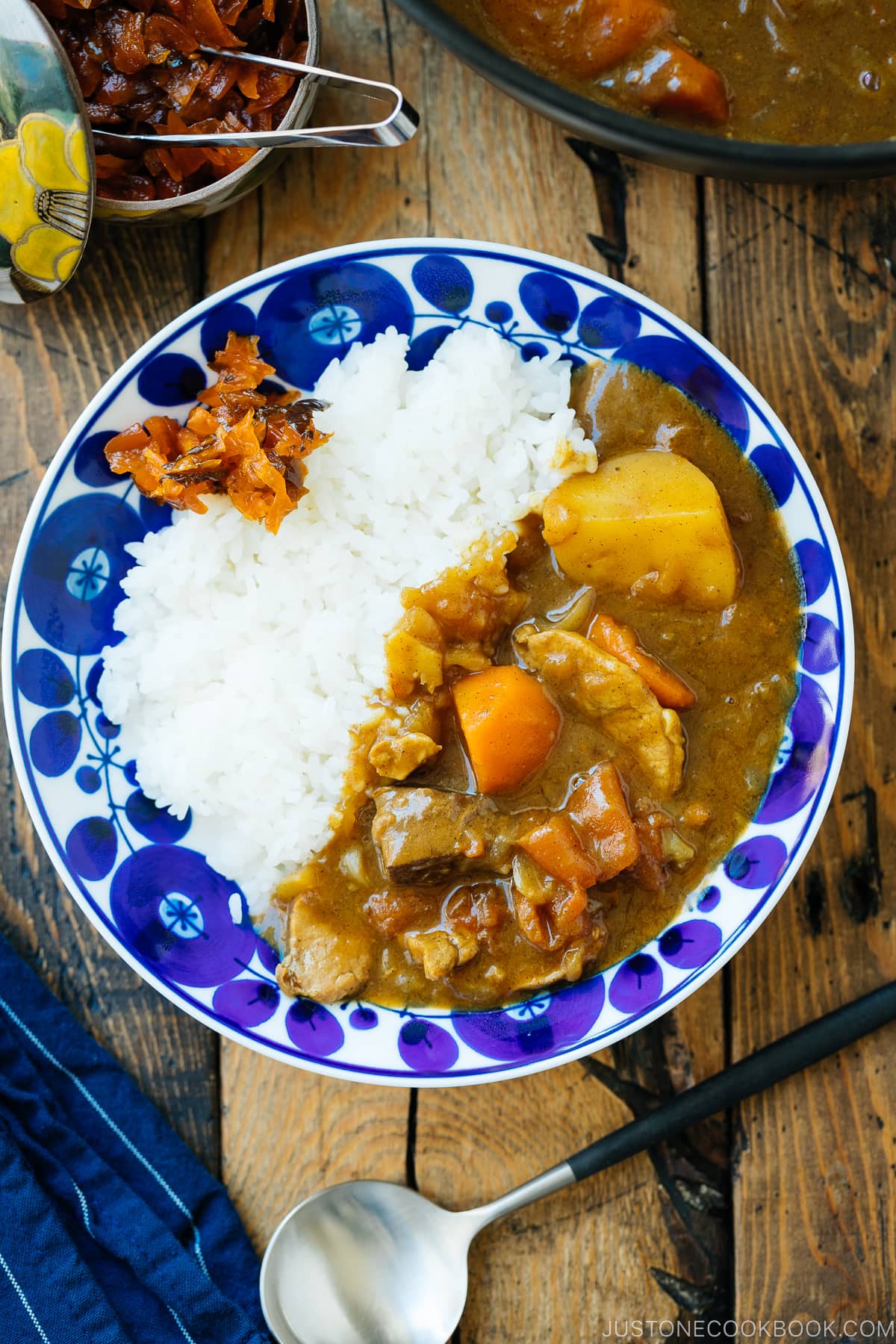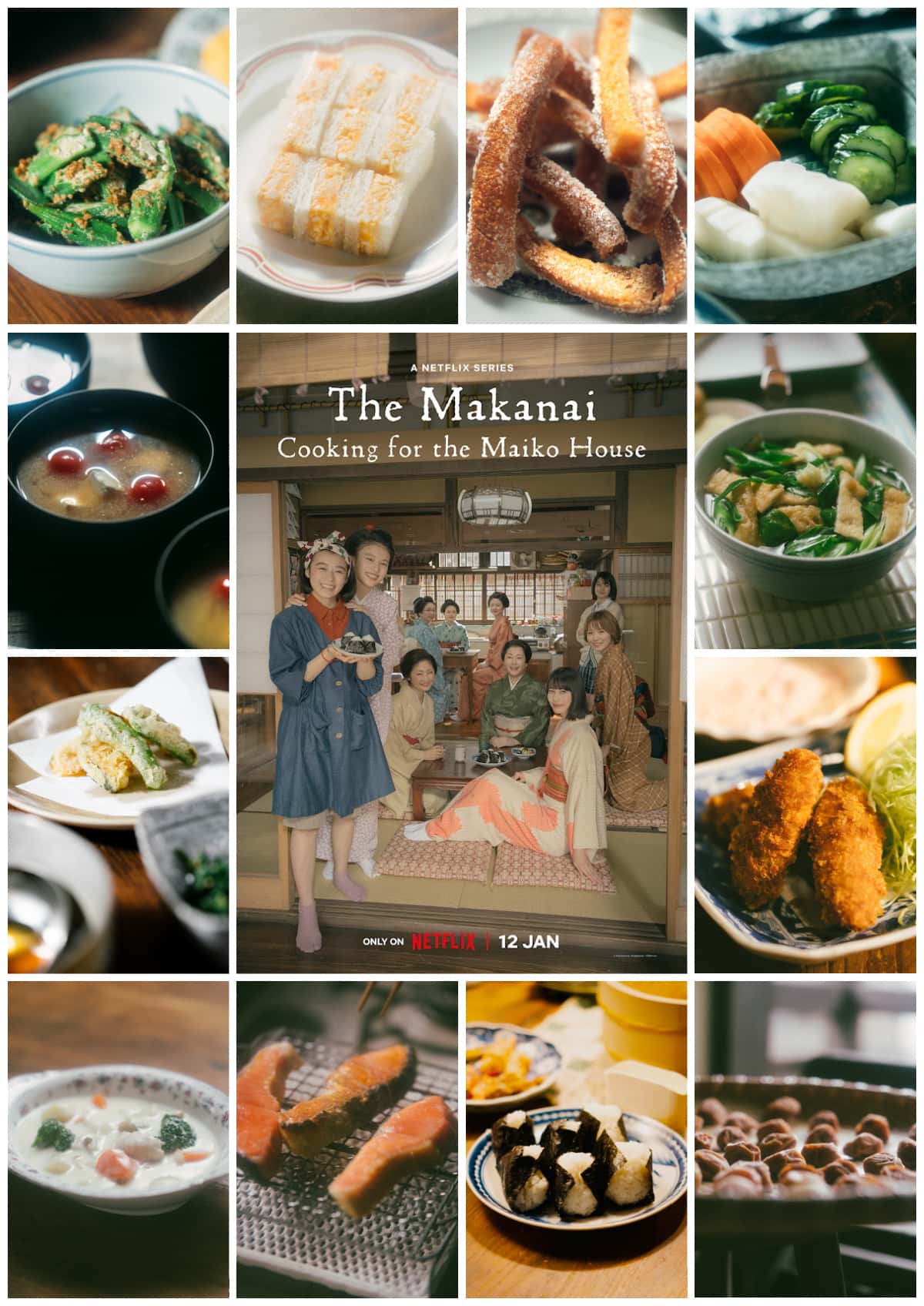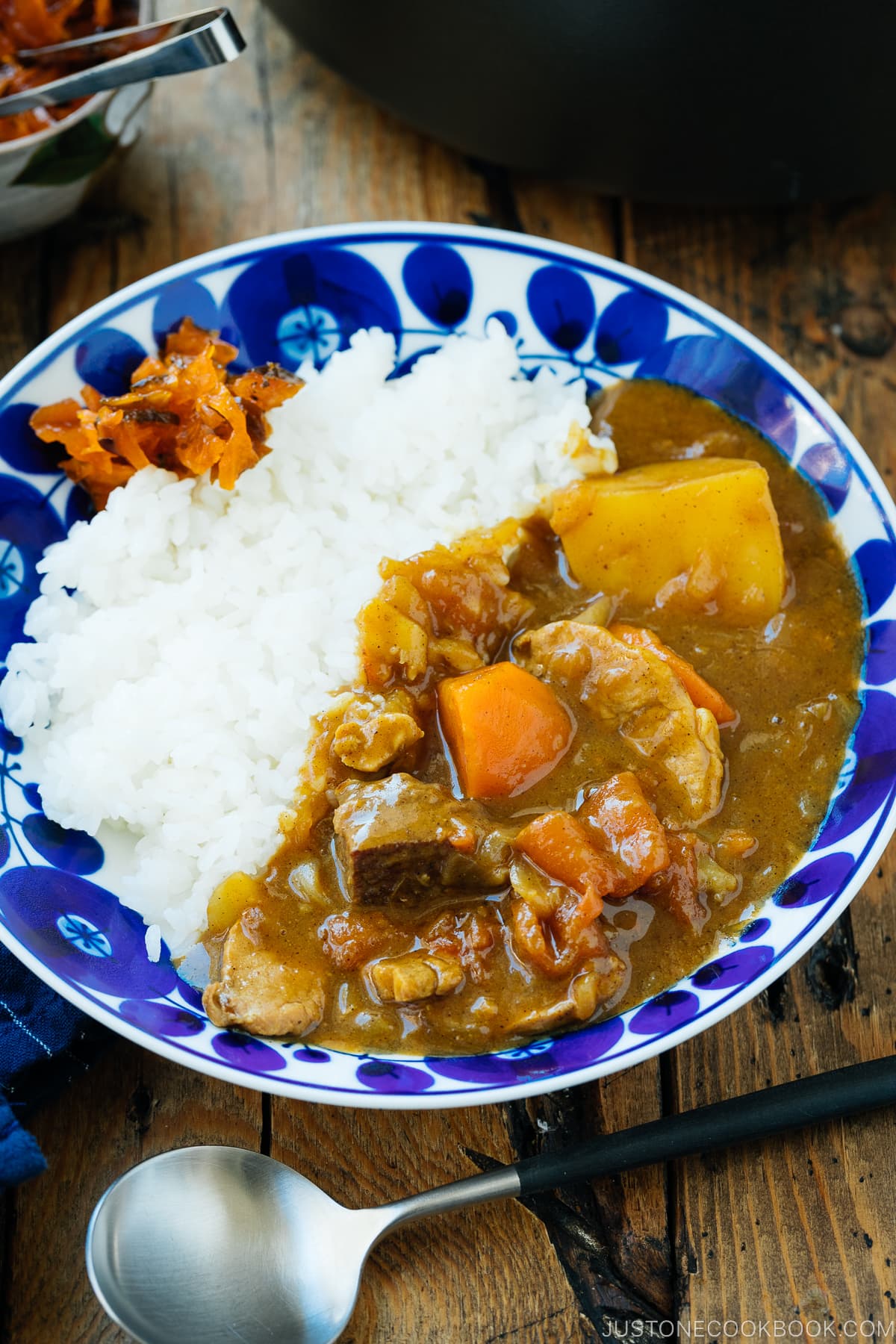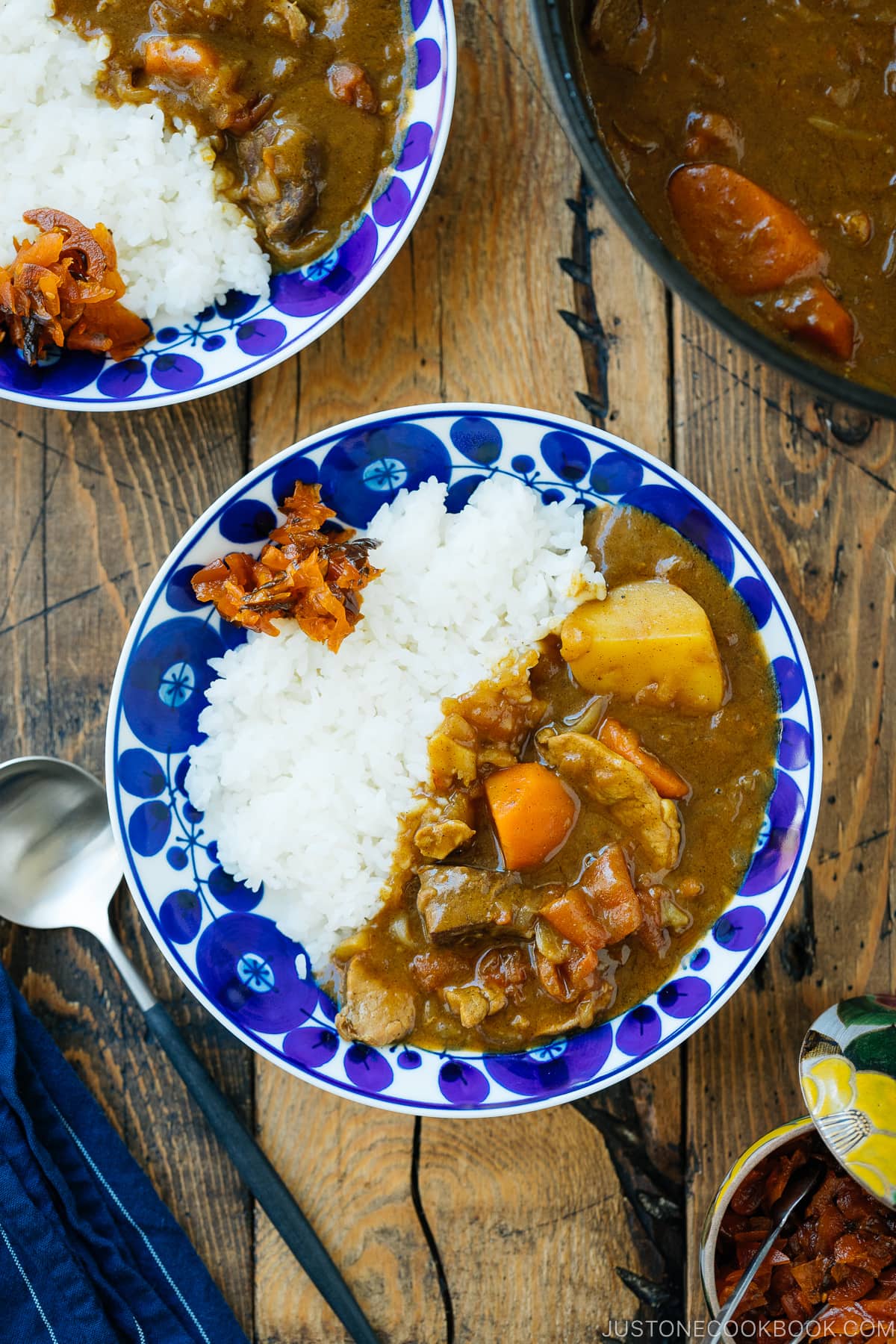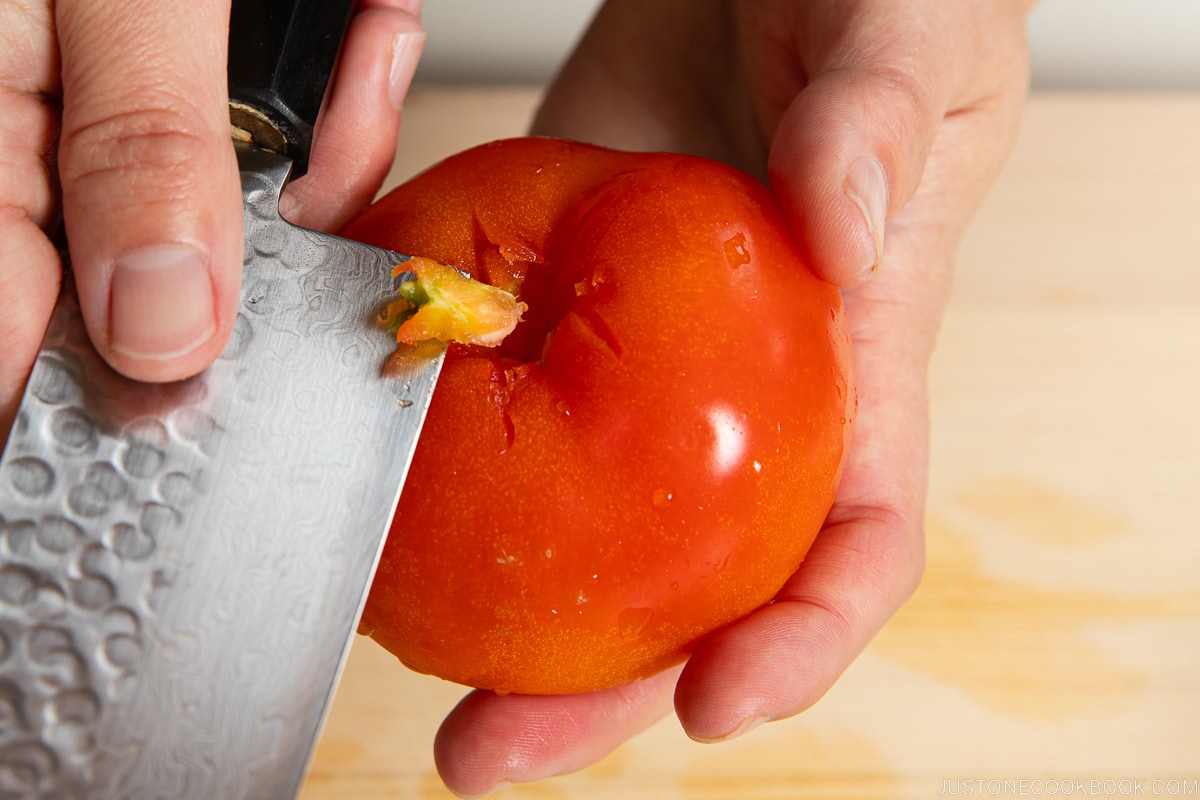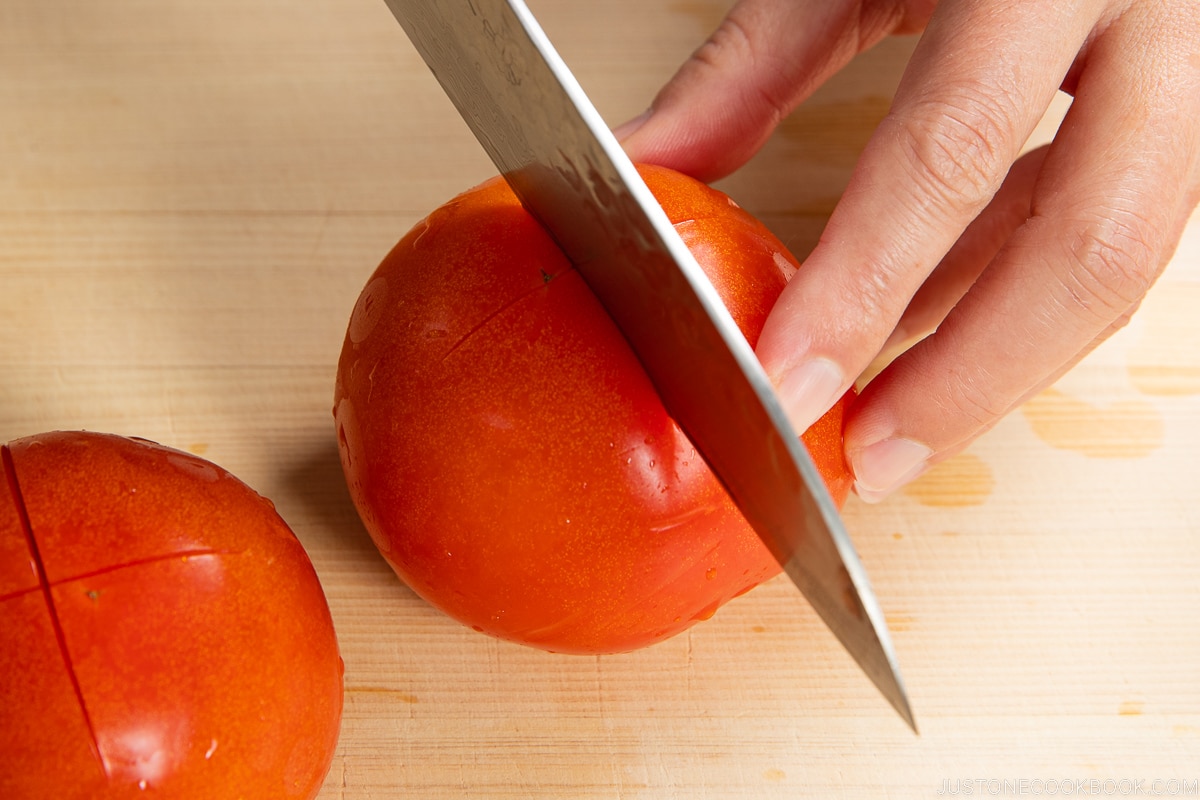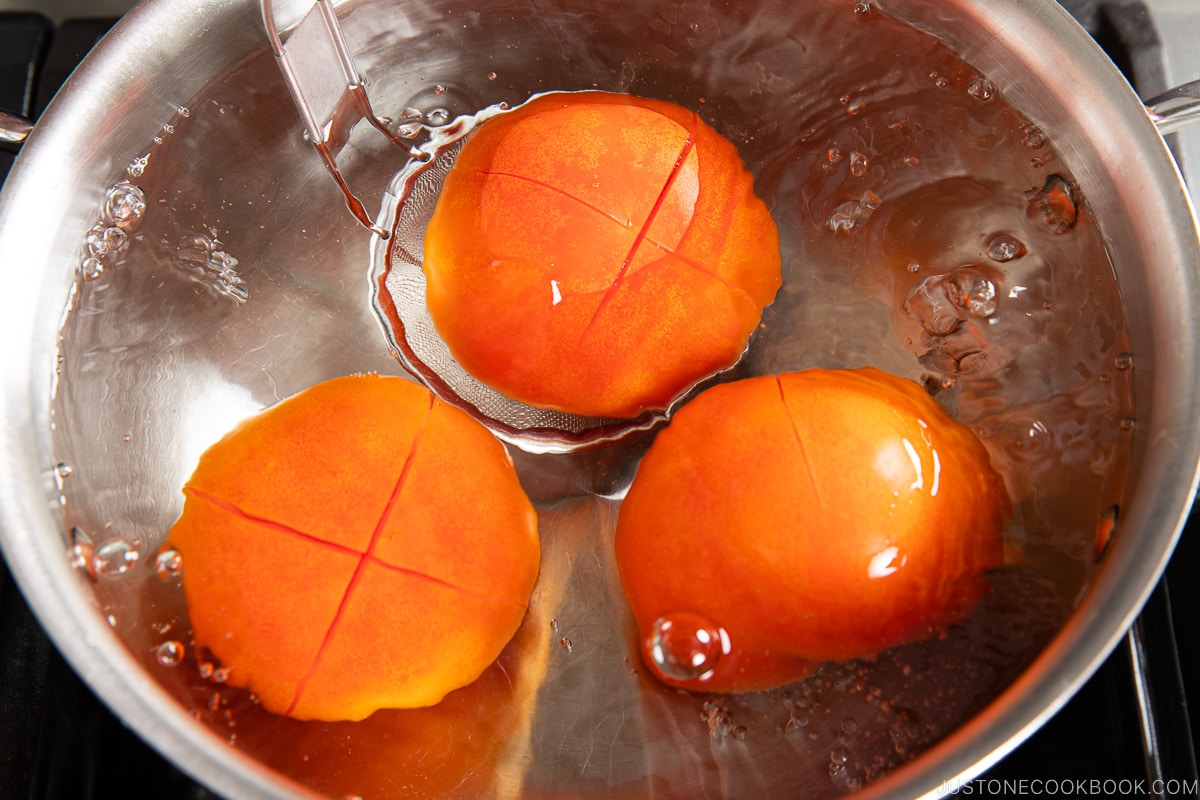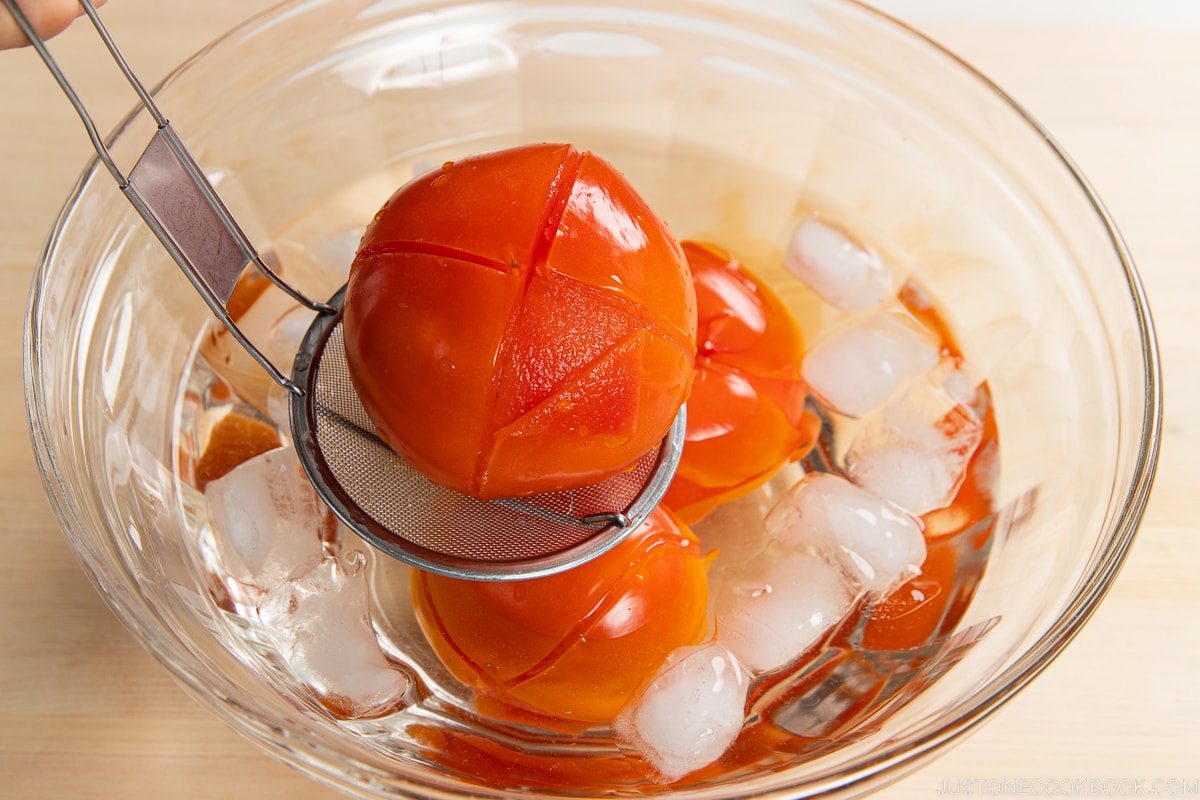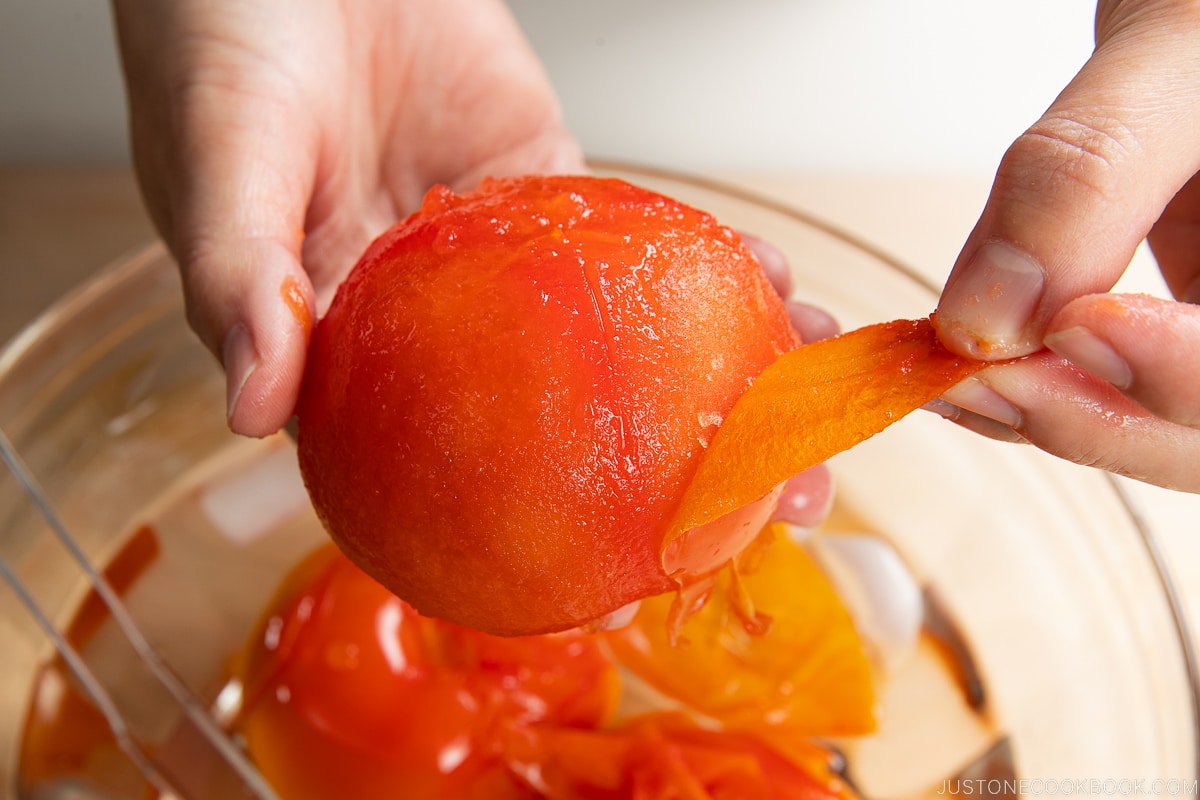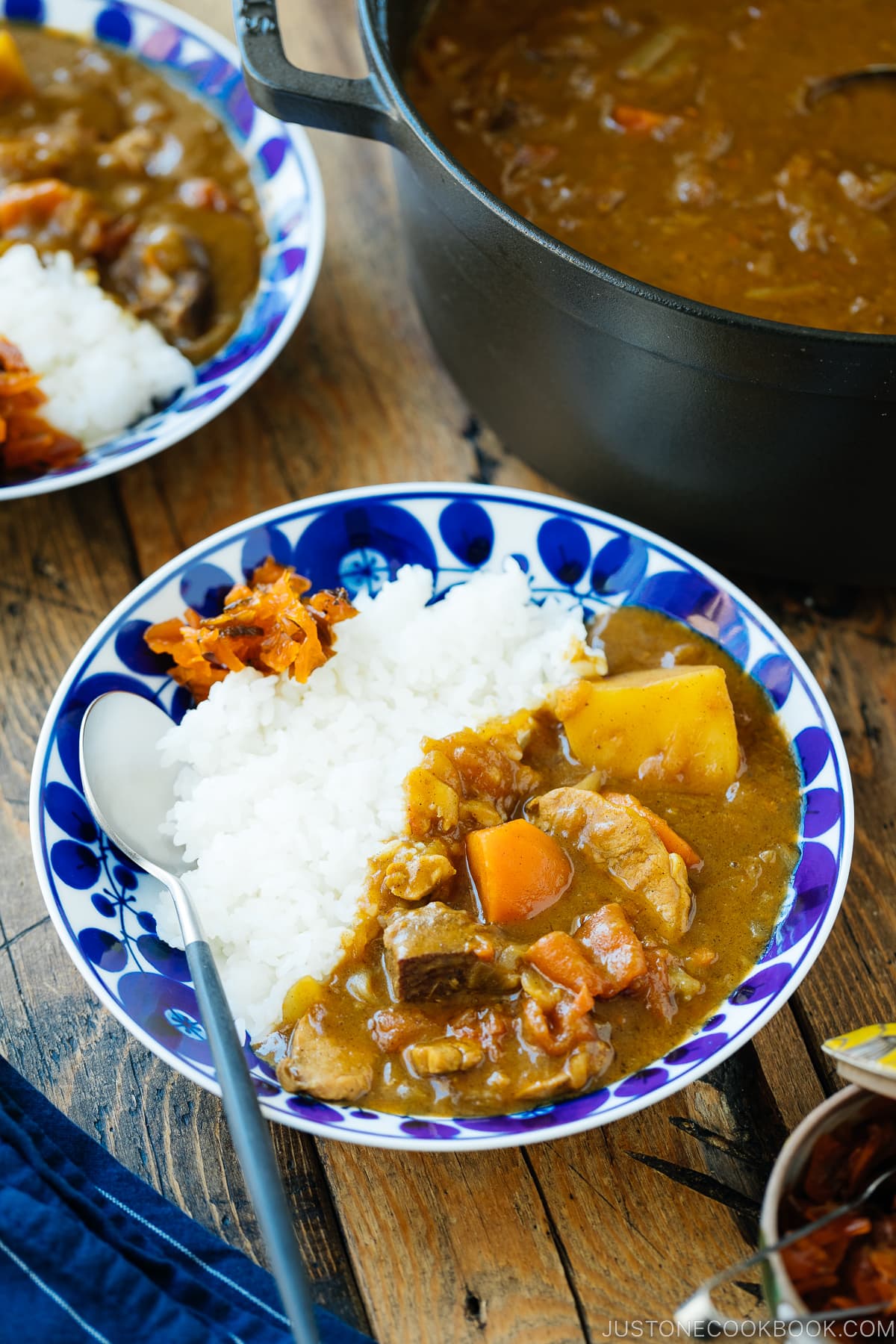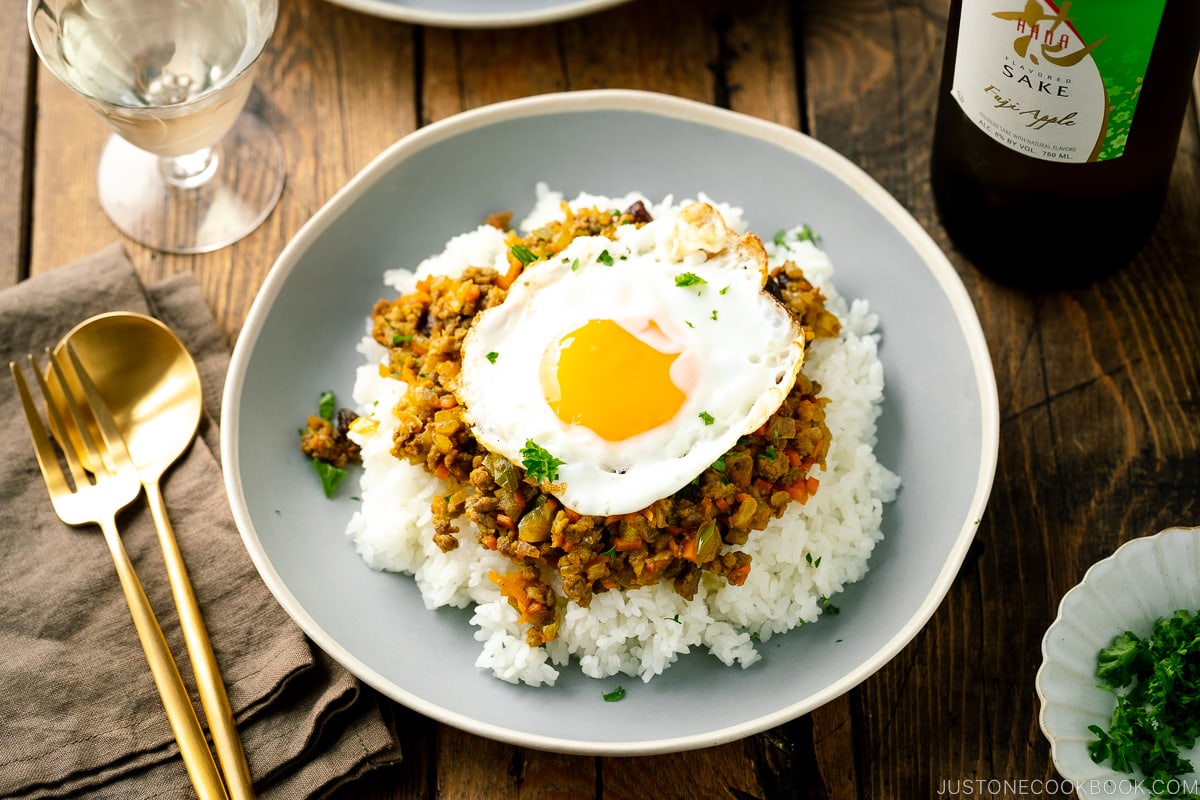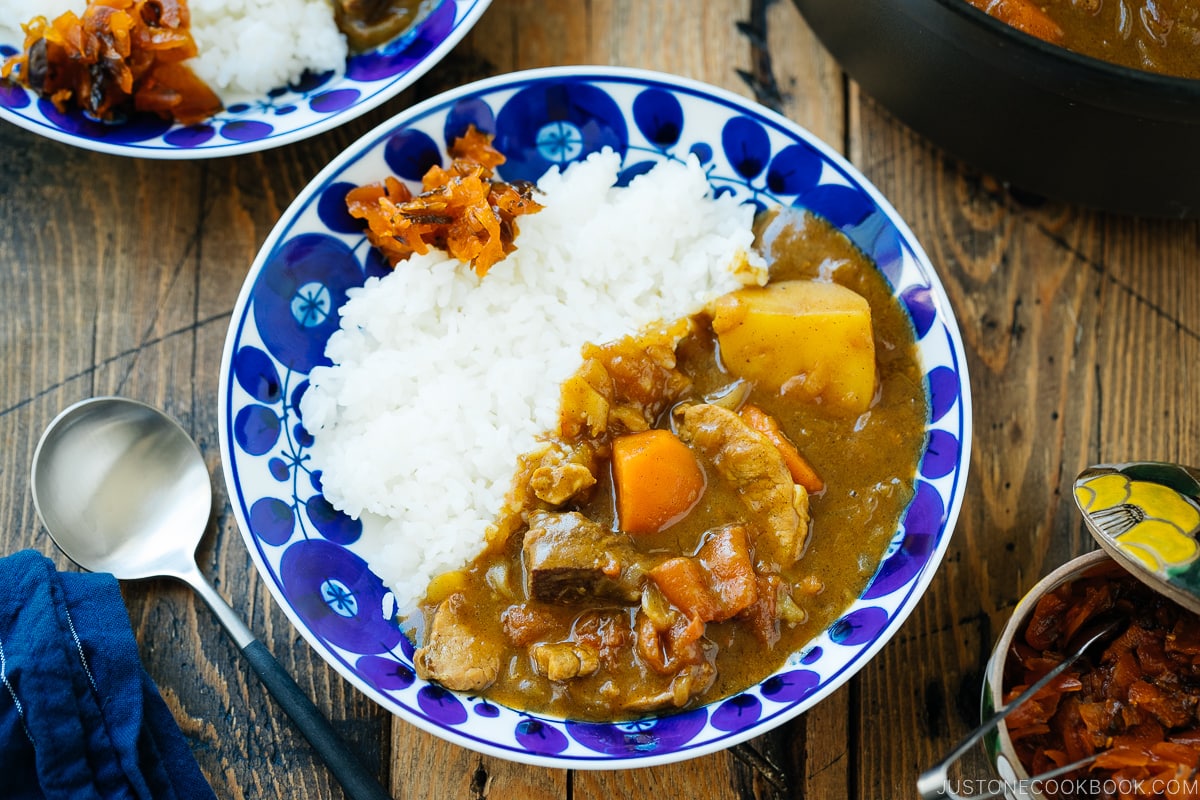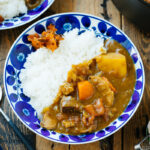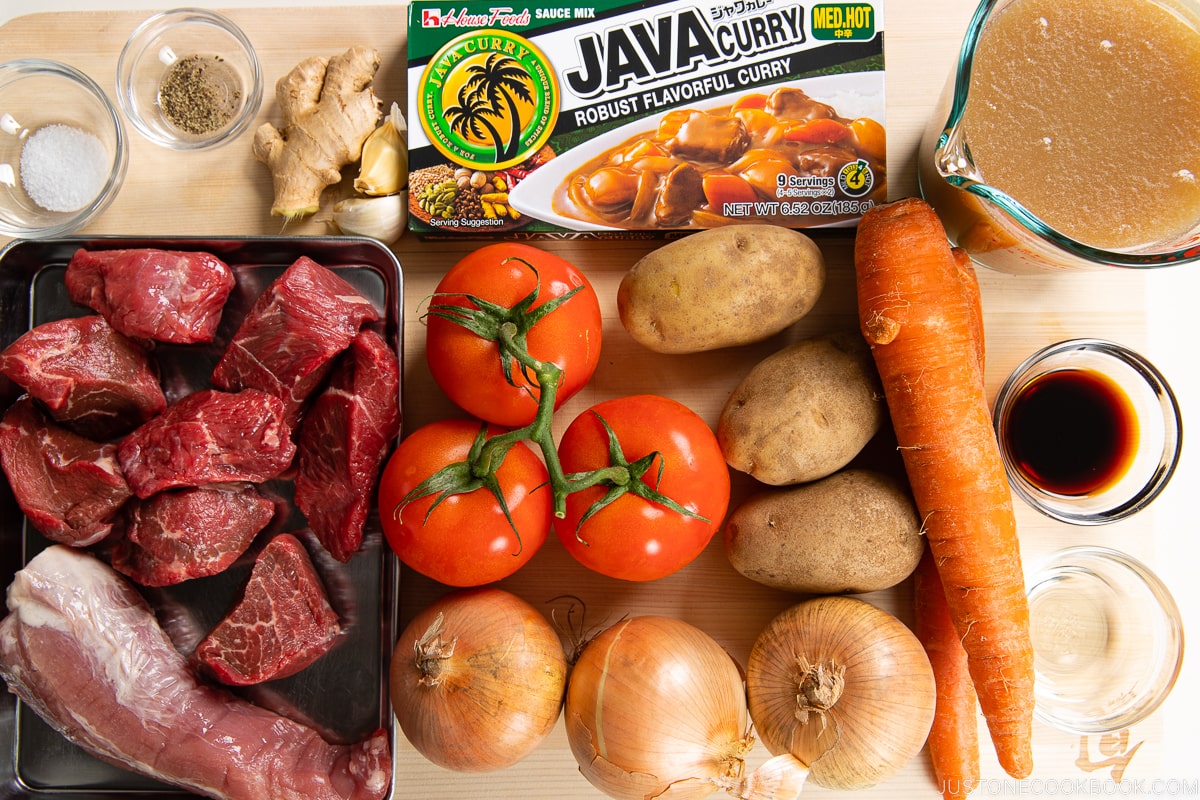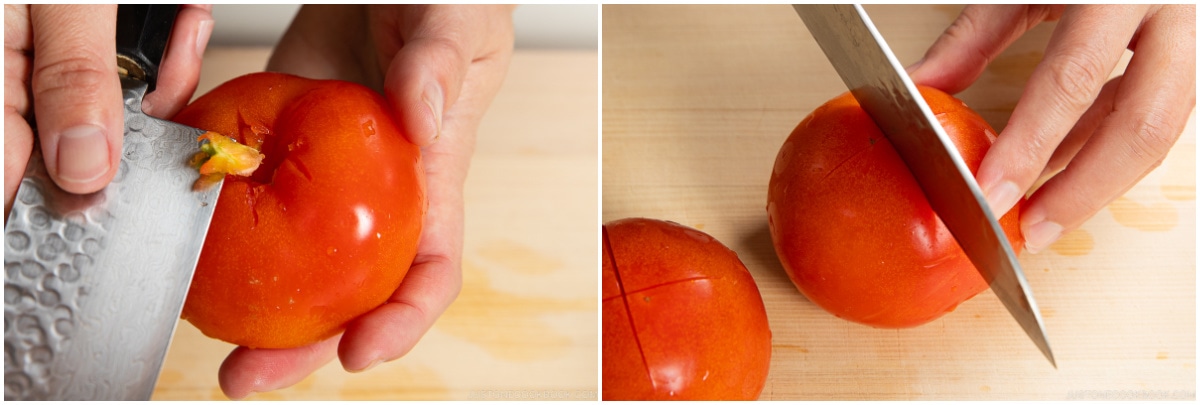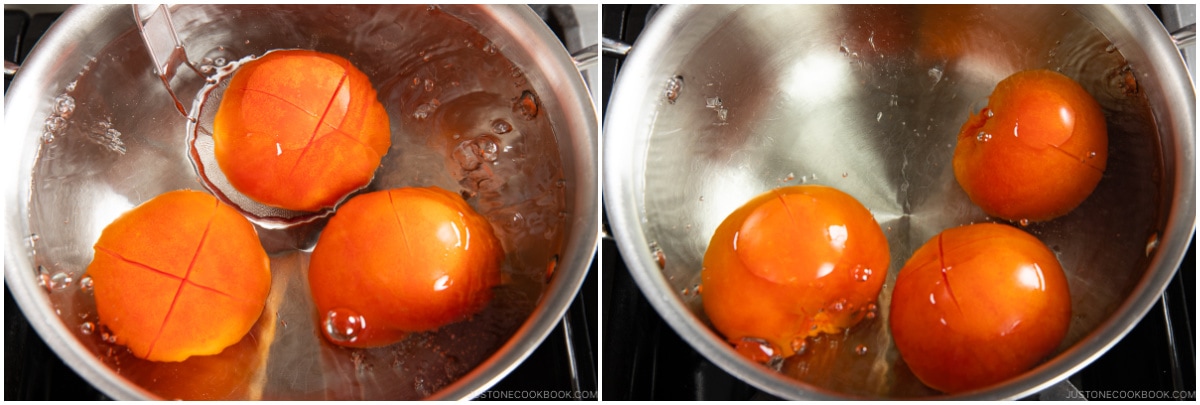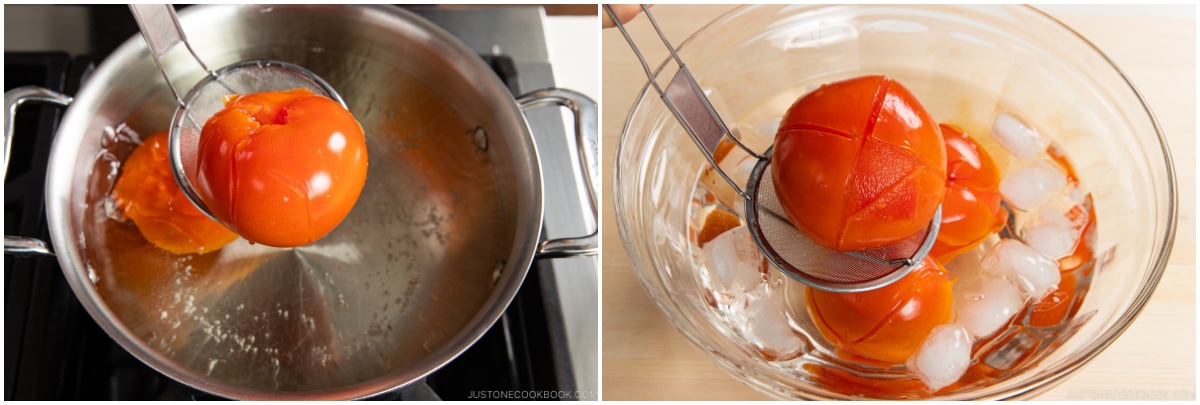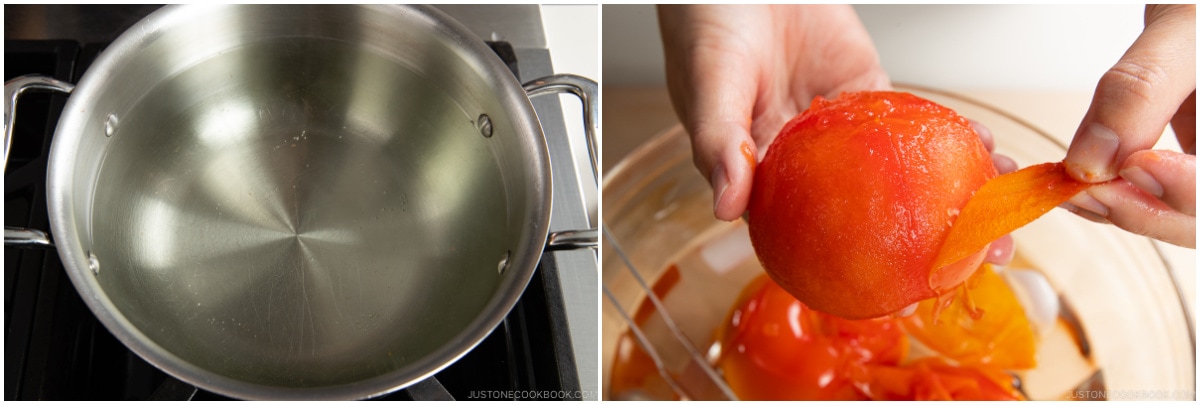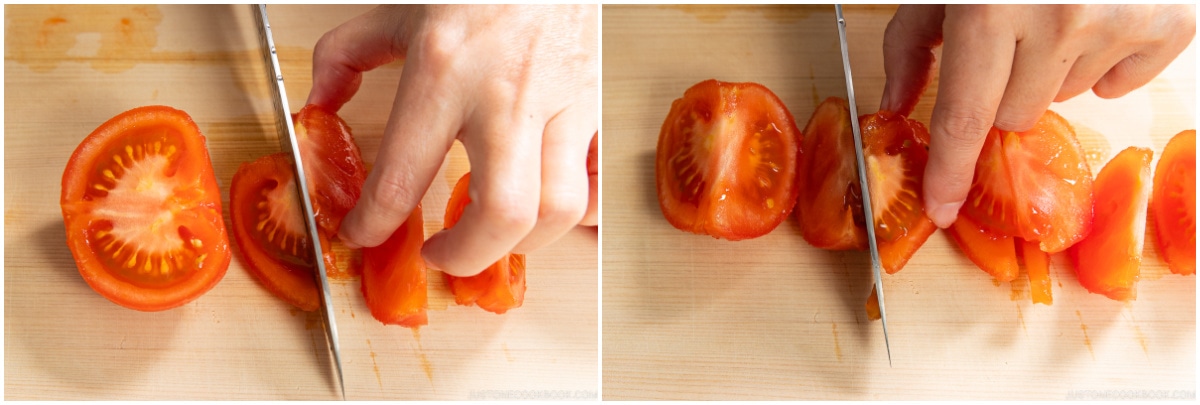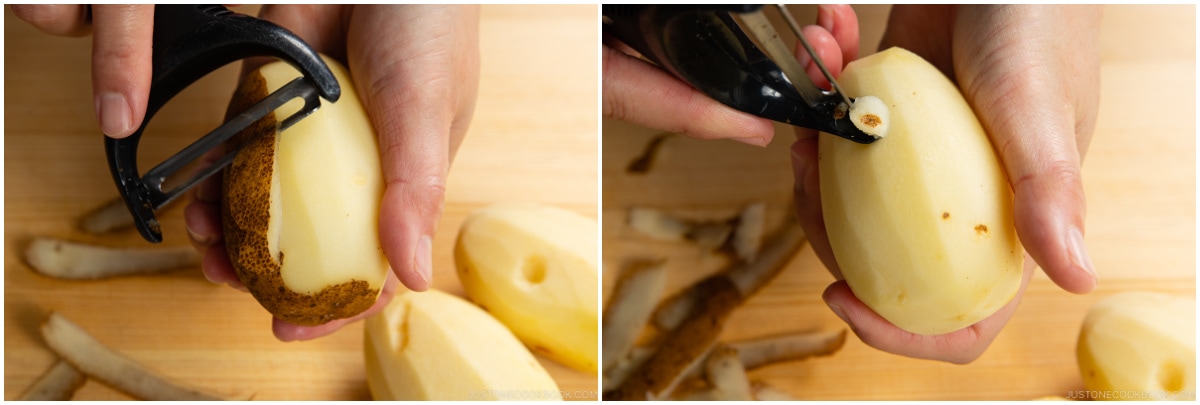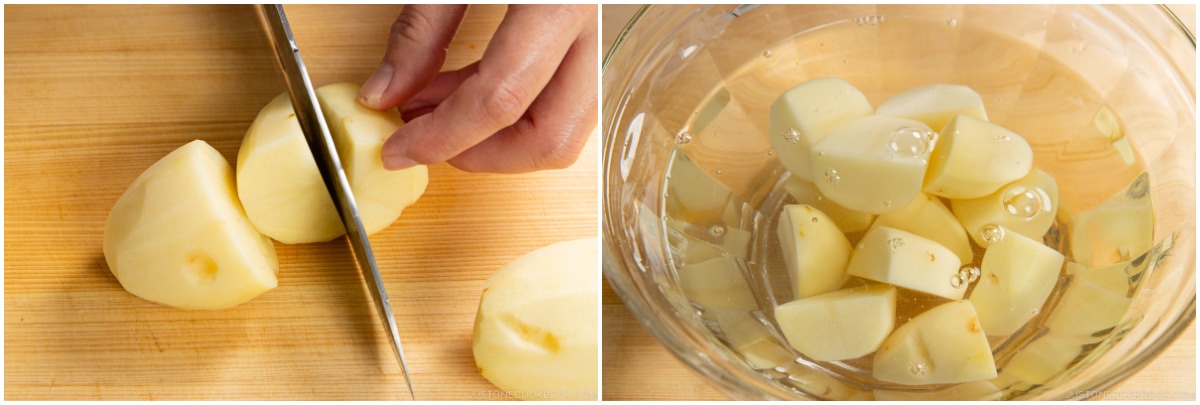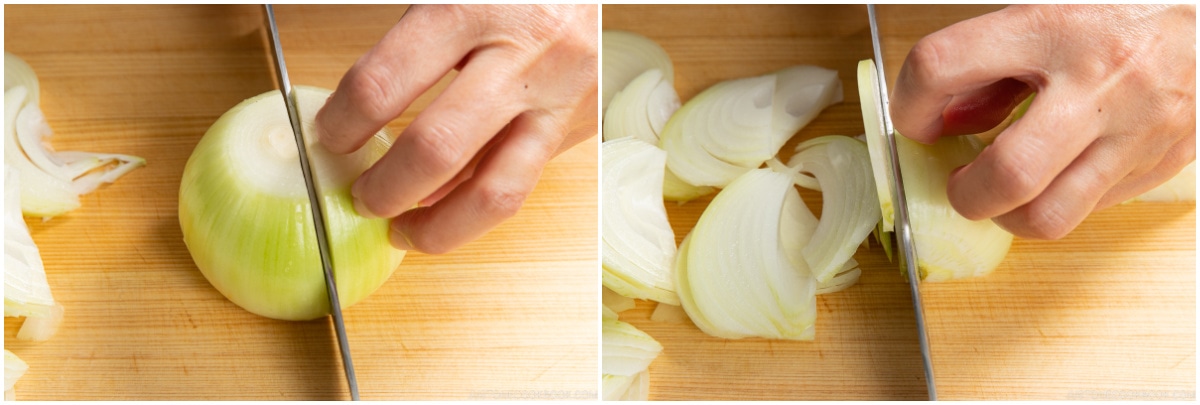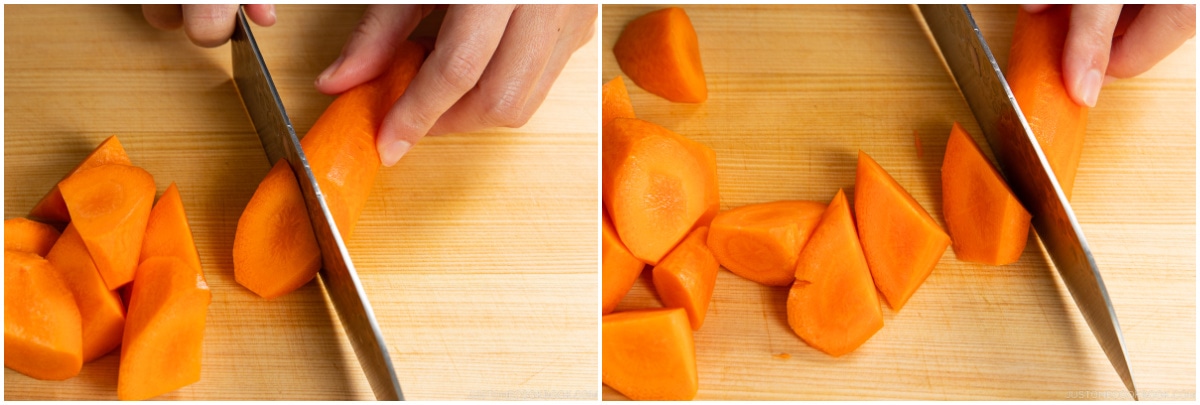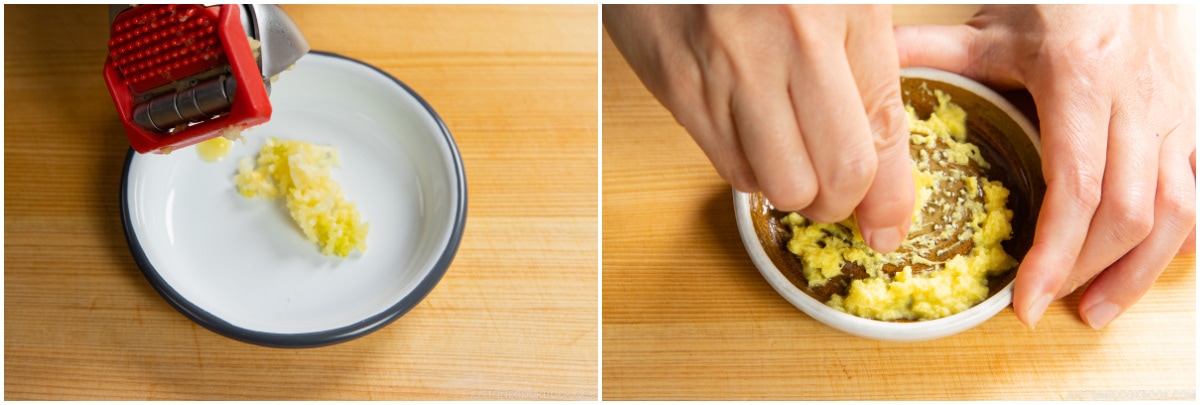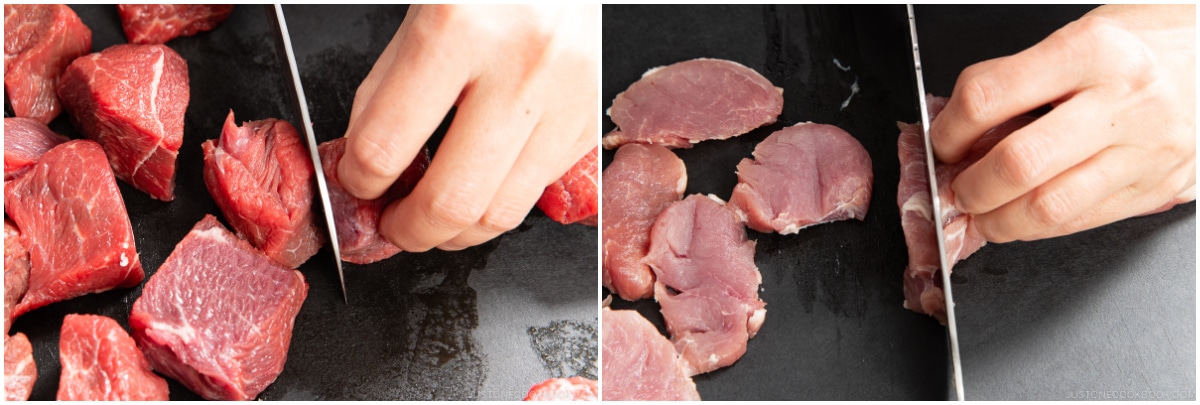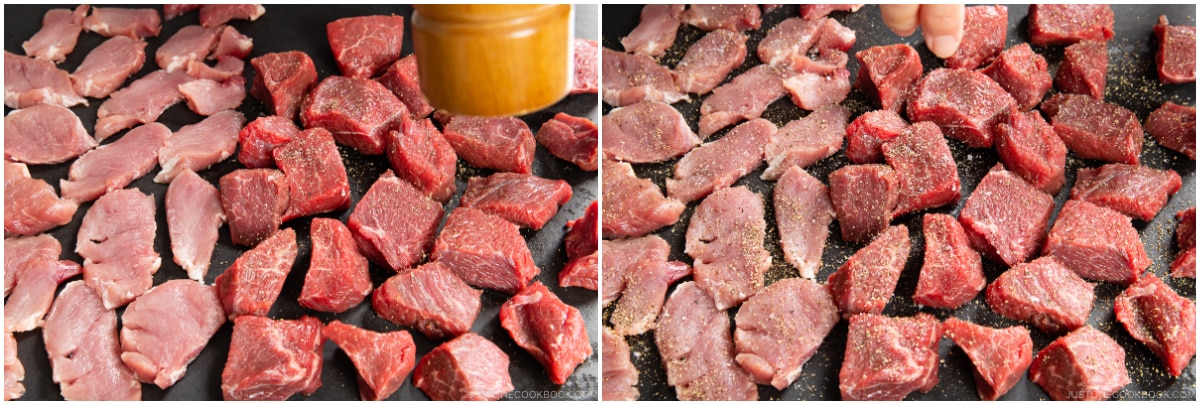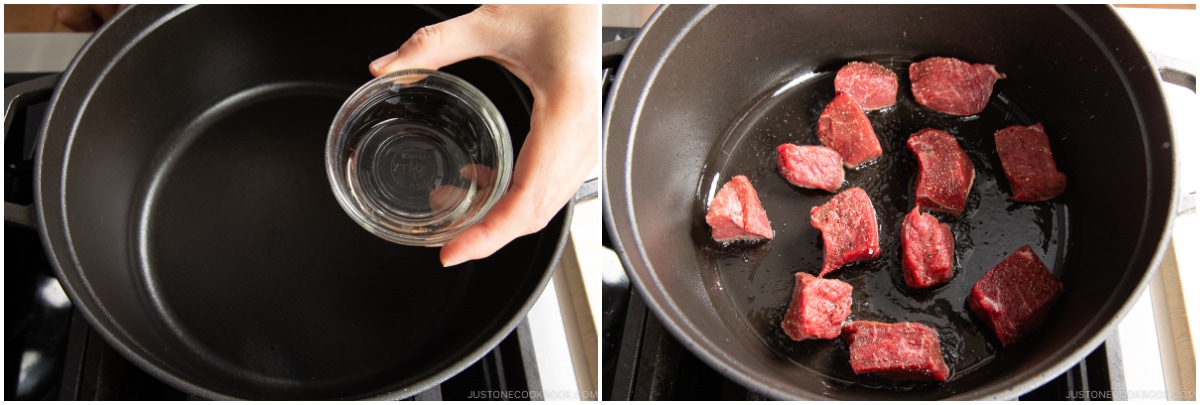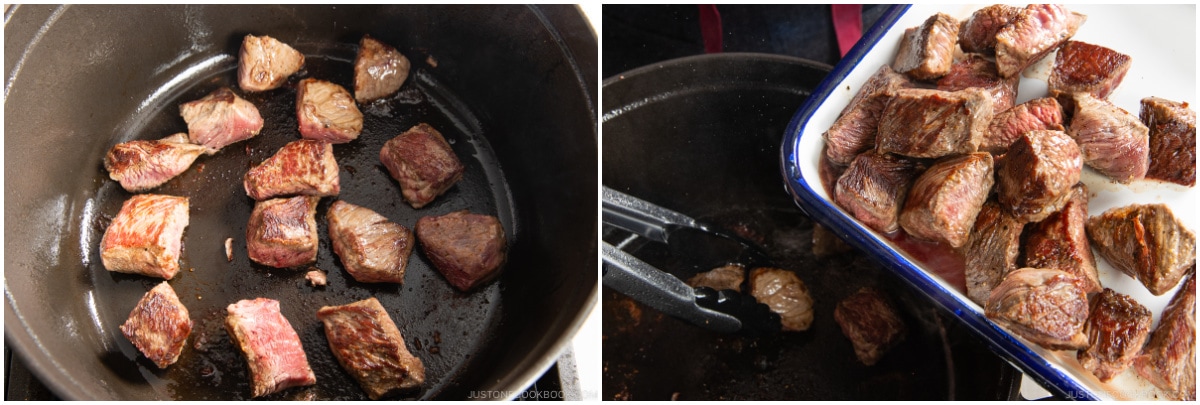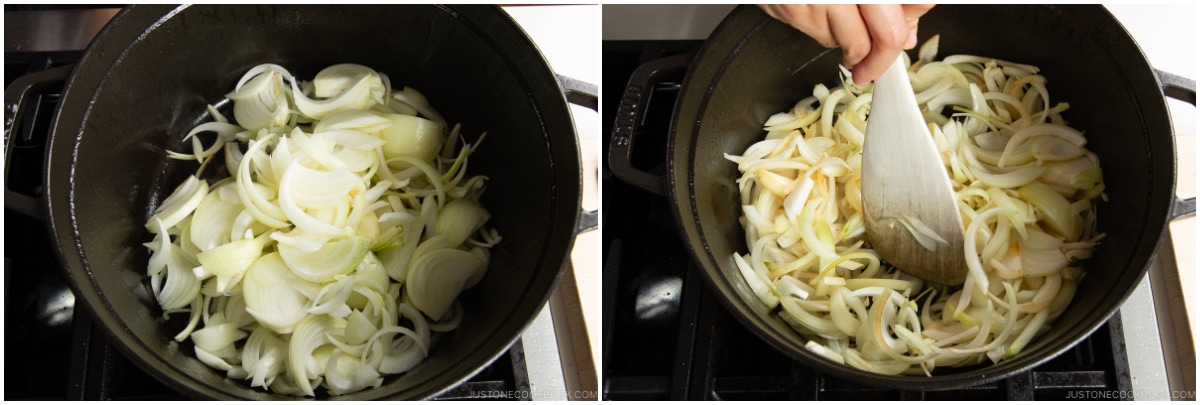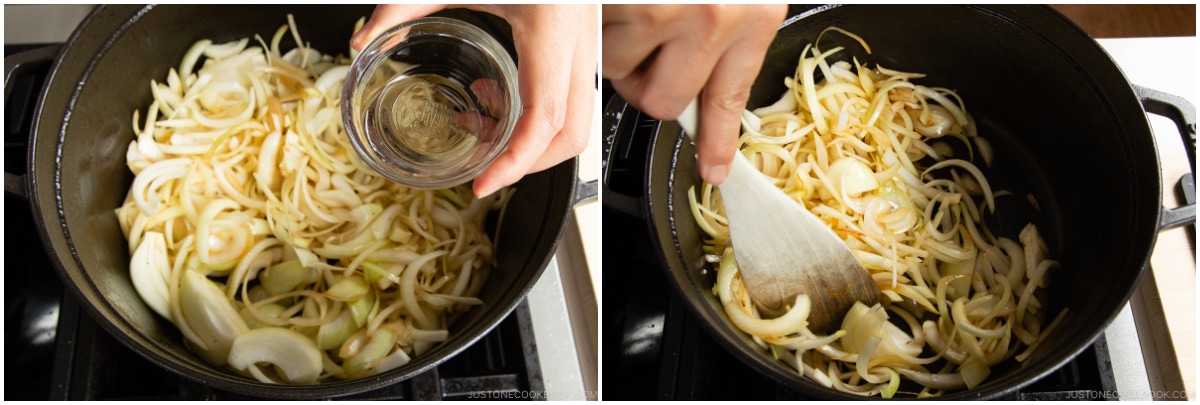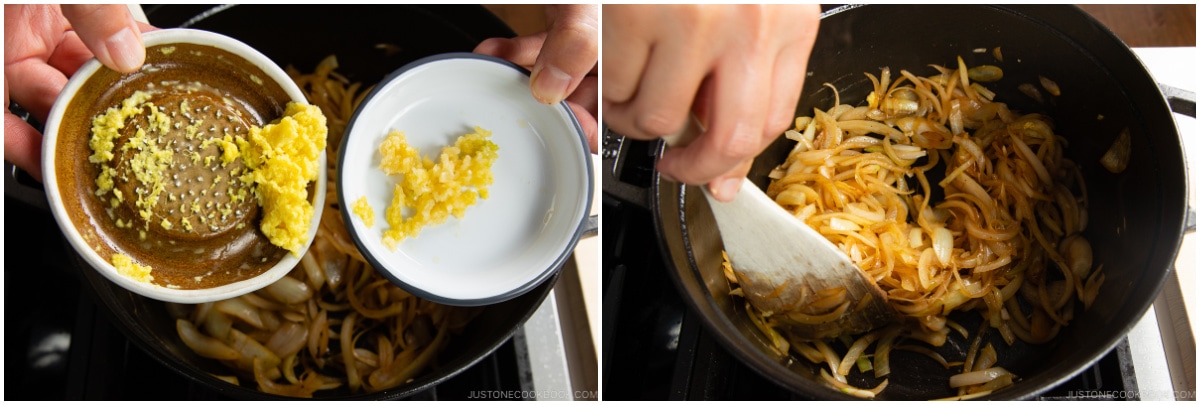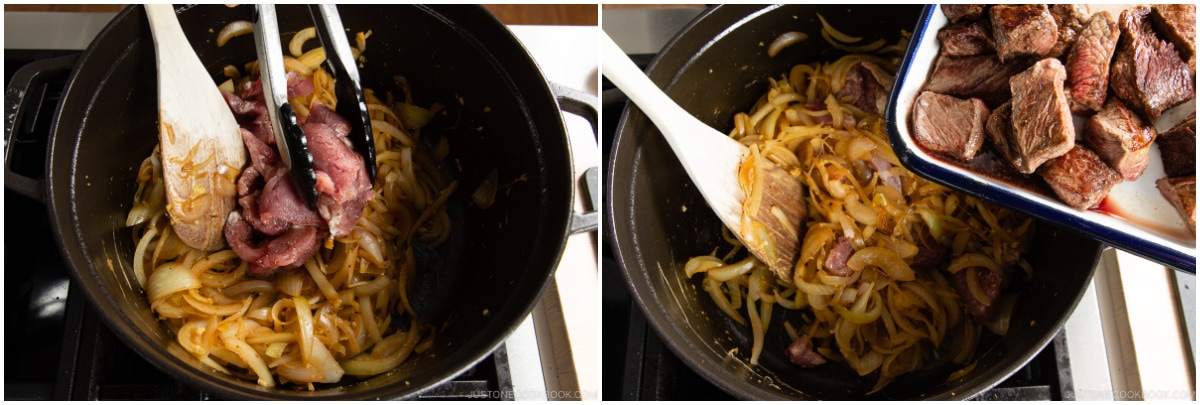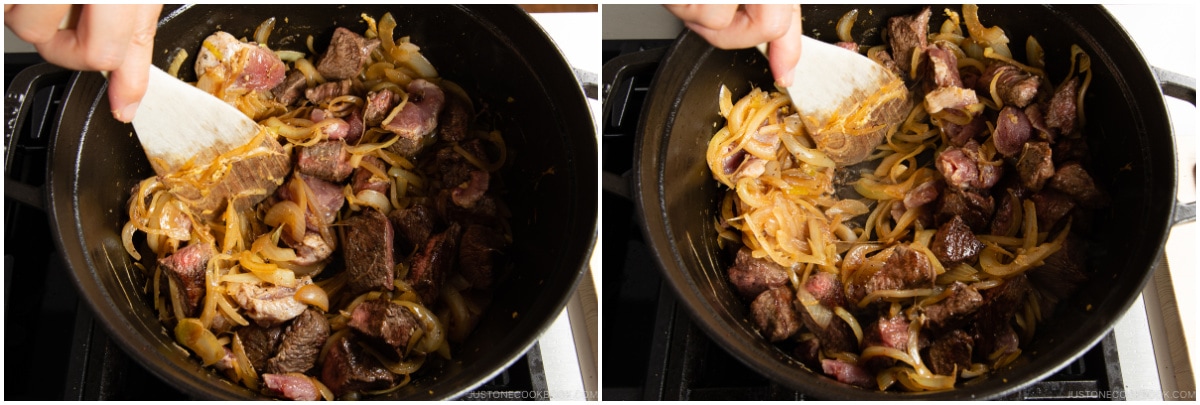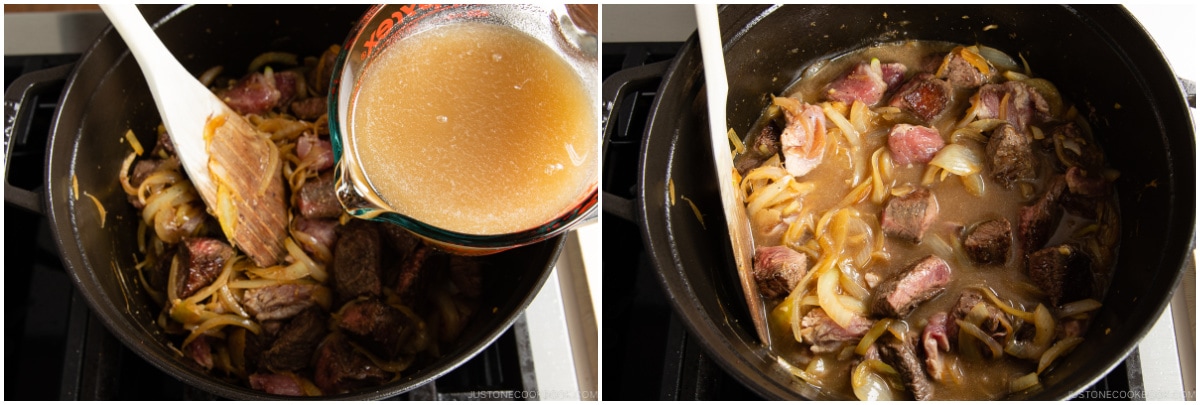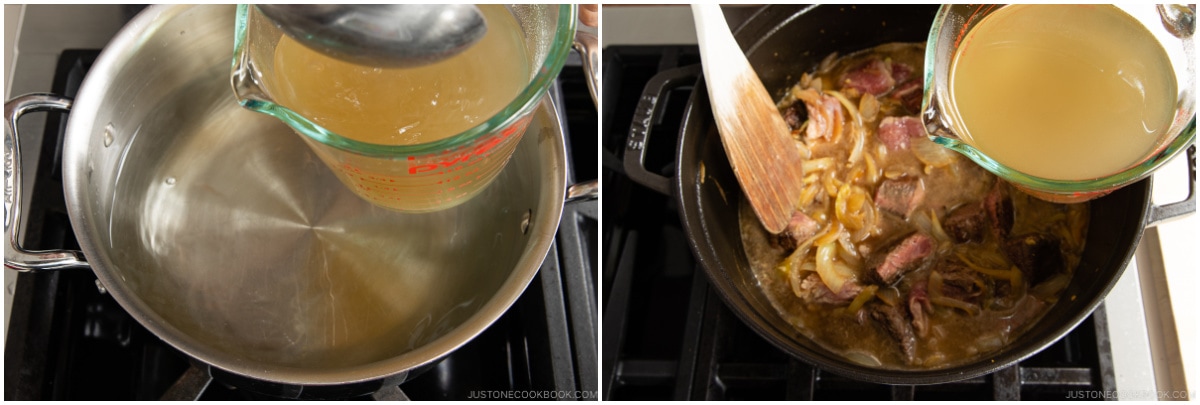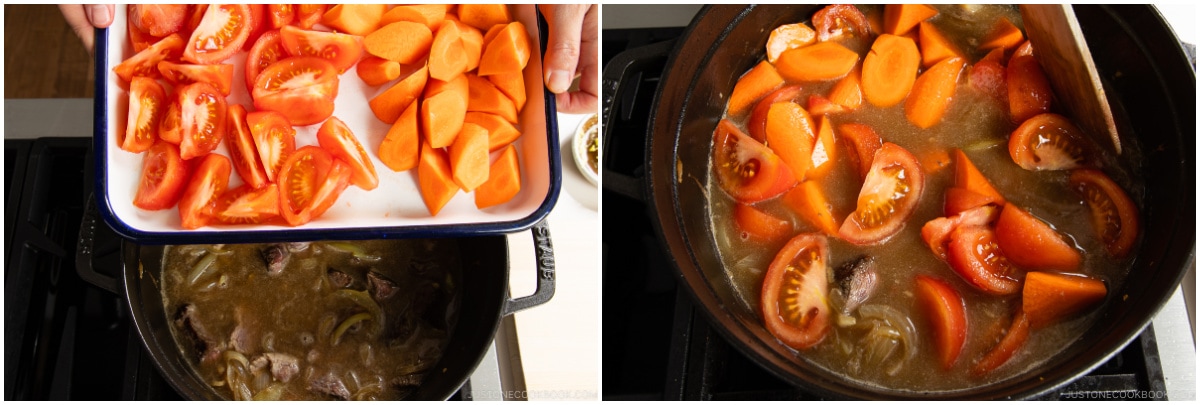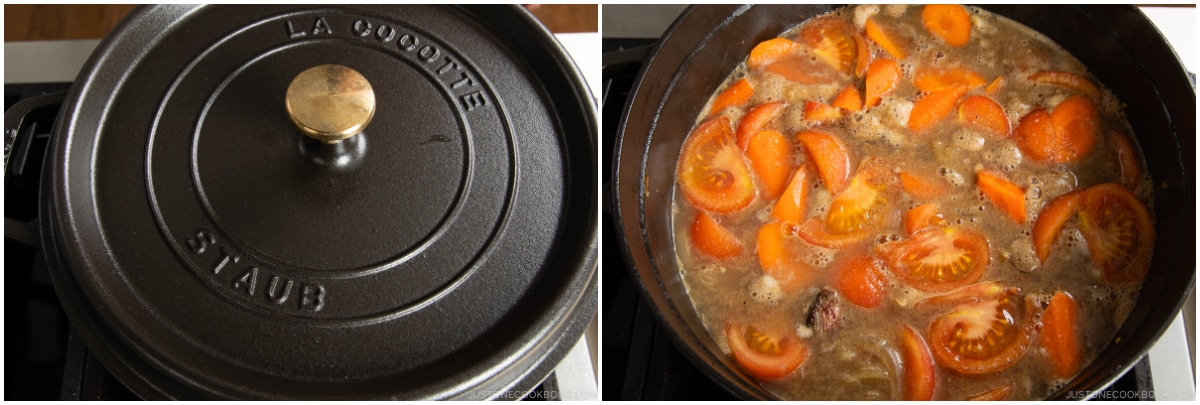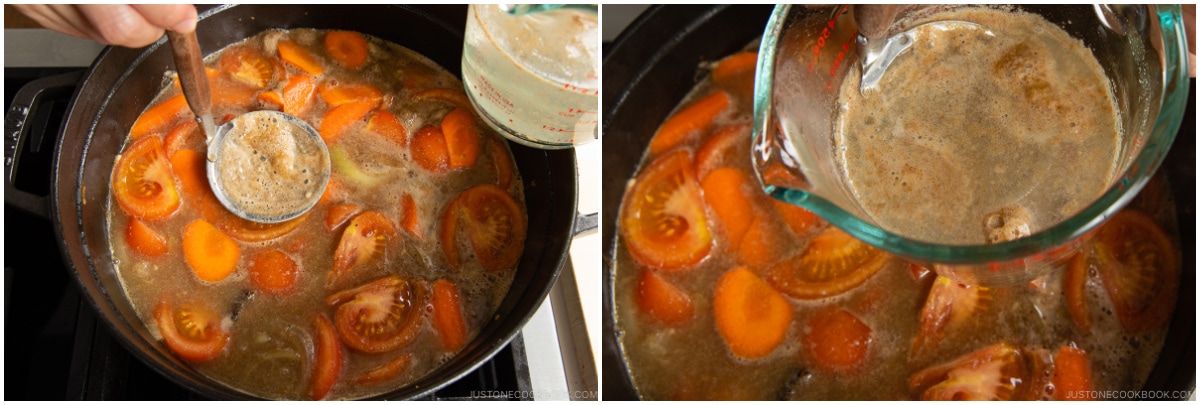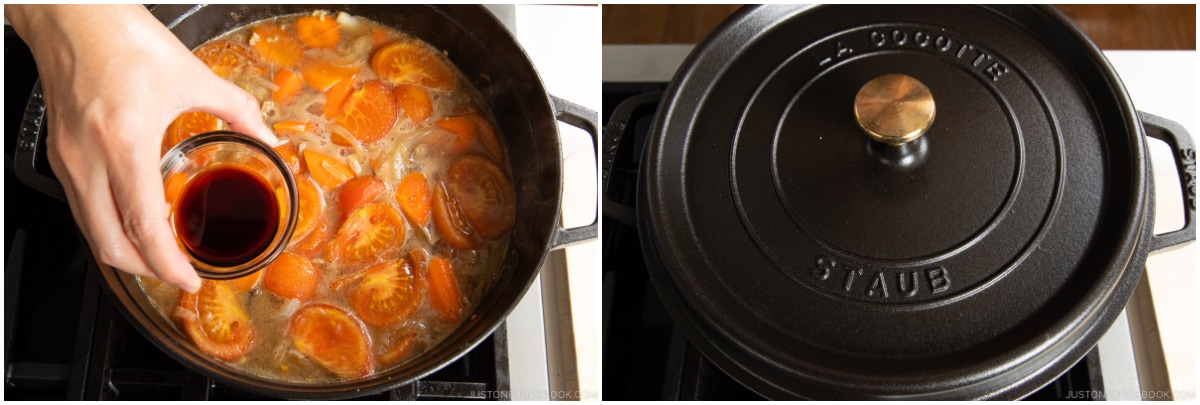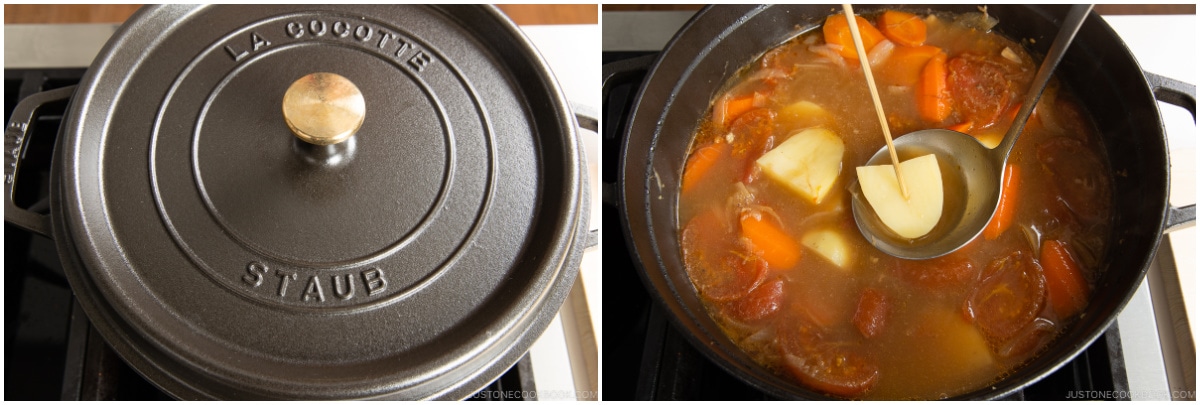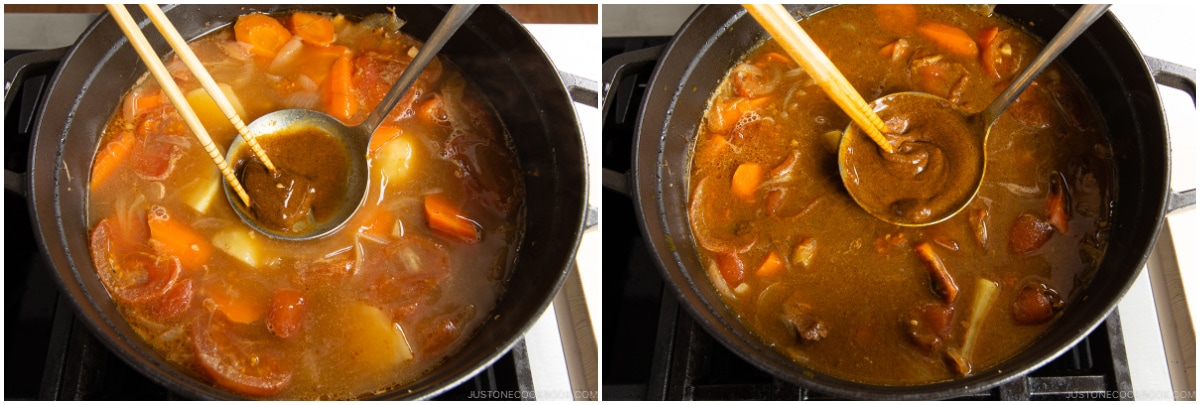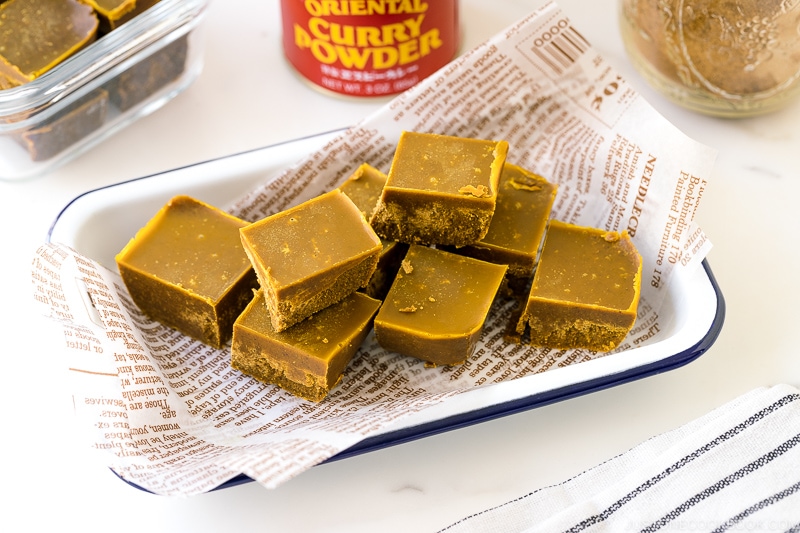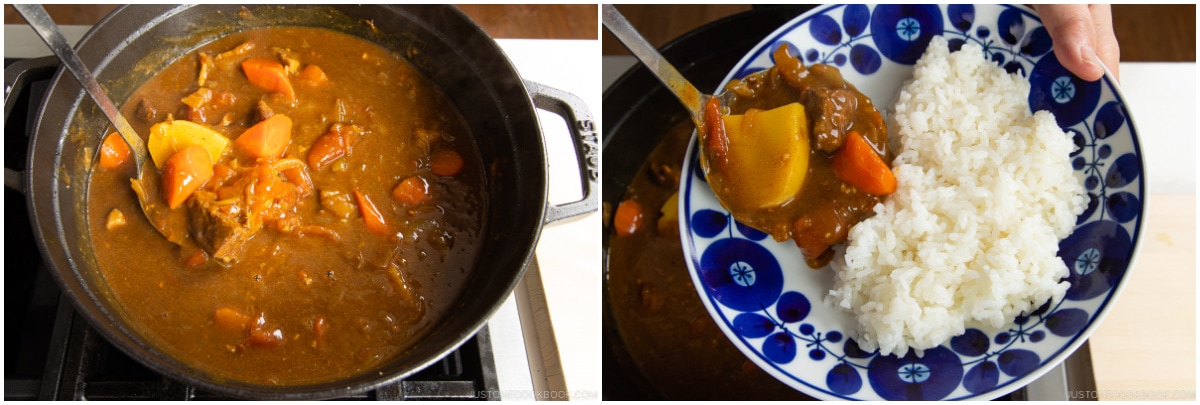Japanese curries are a staple in my household so I’m always open for new and tasty versions to add to my curry repertoire. After watching The Makanai: Cooking for the Maiko House on Netflix, I was inspired to make Japanese Tomato Curry (トマトカレー). The curry-making scenes in the drama are only a brief second but with a little imagination you could almost smell the fragrance wafting from the pot. I was left hungry and determined to recreate the curry at home so we could all enjoy it. If you landed on this page looking for the Tomato Curry recipe featured in the drama, don’t forget to check this post and try other recipes from The Makanai!
What is Japanese Curry?
Japanese curry is quite different from most other curries in the world. It has a thicker consistency and the taste leans on the sweet and savory side, not necessarily spicy. The common ingredients include one or a mixture of protein and root vegetables like sweet onions, carrots, and potatoes. The sauce is thickened by a roux (a mixture of fat and flour) and layered with spices and earthy flavors. Compared to Thai or Indian curry, Japanese curry might remind you of a hearty stew. If you wish to train your kids to appreciate spiced-flavored food, I’d say start with Japanese curry! It has a milder heat so it’s suitable for their palate. This tomato curry would have even more appeal to children because of the familiar tangy flavor. Don’t miss my Japanese curry recipes roundup, which includes vegetarian curry and more!
How to Make Japanese Tomato Curry
Ingredients You’ll Need
Beef chuck roast – Stew beef is slightly more economical but not as tender after cooking. Pork tenderloin Onions Carrots Russet potatoes – You can also use Yukon gold potatoes. Tomatoes – Use round and firm tomatoes that are fruity, juicy, and full of flavor; vine-ripened, heirloom varieties work particularly well; avoid beefsteak tomatoes that have a milder flavor. Ginger Garlic Beef stock/broth Japanese curry roux – If you can’t find it, make my Homemade Curry Roux Other seasonings: Salt, freshly ground black pepper, oil, butter, and soy sauce Japanese short-grain rice – You can cook it with a rice cooker, pot over the stove, Instant Pot, or donabe.
Ingredient Substitutions
Do we need to use both beef and pork? No, you don’t have to. Kiyo in the drama makes her grandma’s tomato curry, which includes both beef and pork. How can I make this vegetarian friendly? Skip beef and pork and use king oyster mushrooms or eggplant instead (they have a nice meat-like bite). Use vegetable broth or simply use tomato blanching water.
Overview: Cooking Steps
Why Do We Remove the Tomato Skin?
The tomato skin remains even if it is cooked for a long time. When you eat the food and the tomato skin is left in the mouth, some people believe that it ruins the flavor and texture of the dish. Personally, I recommend removing the firm skin to improve the texture of the curry. That said, if you don’t mind the texture of the tomato skin, you don’t have to peel it.
5 Steps to Peel a Tomato
The easiest way to remove the tomato skin is to blanch the tomatoes in boiling water. This is the most common and efficient way to peel the tomato.
Step 1: Remove the stem end
Insert the tip of a very sharp knife (like a paring knife) at the stem end, about ½ inch (1.25 cm) deep. Angle the knife and cut around the stem end in a circular motion to remove the hard core.
Step 2: Score the skin on the bottom of the tomato with an “X”
Next, lightly score the skin on the bottom of the tomato with an “X” about 2 inches (5 cm) long. Repeat with the rest of the tomatoes.
Step 3: Blanch the tomatoes
Gently place the tomatoes in the boiling water. Make sure there is enough water to completely submerge the tomatoes. Blanch for 15 seconds or until you see the tomato skins start to peel back. You don’t have to wait until all the skin is completely peeled. Larger tomatoes may require more time, but don’t overcook them because the flesh will become mushy. Please RESERVE this tomato blanching water for later use!
Step 4: Transfer to an ice bath
Using a fine-mesh skimmer or slotted spoon, remove the tomatoes and immediately transfer them to a bowl filled with ice water to quickly cool down and stop cooking.
Step 5: Peel the tomato skin
When the tomatoes are cool enough to handle, peel and discard the tomato skins using the knife or your fingers. Now they are ready to use!
Tomato Curry Cooking Tips
Use beef chuck roast. Butcher counters sell pre-cut stew beef. This cut is more economical because it’s made up of the odds and ends from other different cuts. Chuck roast, on the other hand, is from the shoulder muscles, and while initially quite tough, cubes of chuck roast can break down into tender, succulent, flavorful meat after cooking low and slow. If you can’t get chuck roast, try round roast, rump roast, or pot roast. Sear the meat well. This is an essential step if you want to make the most flavorful meat. Searing caramelizes the natural sugars in the meat and browns the proteins, forming a bronze crust on the surface that amplifies the savory flavor of the finished dish. You will be rewarded with a delicious curry with tender pieces of meat in a rich, velvety sauce. Caramelize the onion. When you slow cook the onions over an extended period of time, the natural sugar in the onions caramelizes, bringing out their sweetness and making them extremely flavorful. It takes time, but you can always get the other prep work done while sautéing the onions. Personalize the curry. The beauty of curry is its room for customization. Every cook has the freedom to enhance and personalize the flavors with different ingredients (some can be unexpected). You can see the full list in my Japanese Chicken Curry recipe. For this tomato curry, I wanted to keep it simple and bring the tomato flavor. So, I used garlic, ginger, and soy sauce. Try out different combinations or change up the proportions to see what you like. Add the Russet potatoes later. If you’re using Russet potatoes, they tend to disintegrate into the broth during cooking. So add them 15 minutes before the total cooking time. If you use Yukon gold potatoes, they hold their shape so you can add them to the pot along with carrots.
Other Popular Curry Recipes
Japanese Dry Curry Japanese Beef Curry Japanese Chicken Curry Sapporo Soup Curry Curry Doria Curry Udon Keema Curry Curry Bread
Wish to learn more about Japanese cooking? Sign up for our free newsletter to receive cooking tips & recipe updates! And stay in touch with me on Facebook, Pinterest, YouTube, and Instagram.
